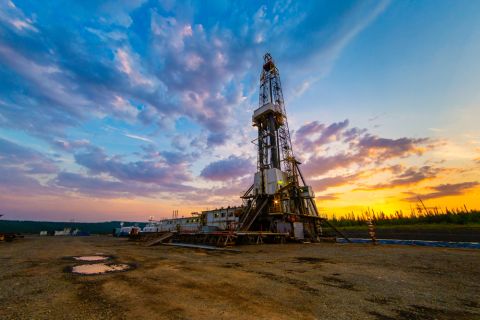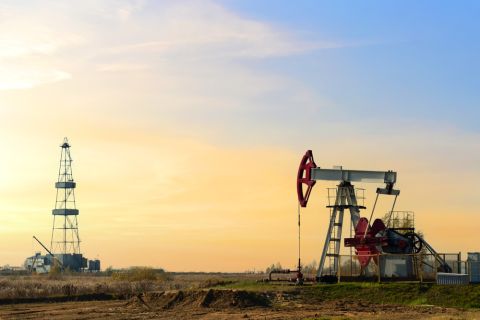The US Energy Information Administration (EIA) has projected that by 2035, shale gas production will account for 46% of US natural gas production. Throughout the world, countries and companies are actively seeking to understand the prospectivity of their own shale deposits. In April 2011, the EIA published the results of a study it commissioned on an assessment of 48 shale gas basins in 32 countries. An early estimate indicates 5,700 Tcf of technically recoverable shale gas resources in those basins outside of the US, which is nearly as much as the world’s proven gas reserves today.
Still, much remains to be done before the rest of the world’s shales are as prospective as those of the US. There is no doubt that the world’s shale gas resources are abundant, as these are the source rocks for existing conventional reservoirs. However, there are so many unknowns that it is extremely difficult to estimate any shale reservoir’s true potential without actually performing the evaluation through drilling, fracturing, and testing as part of an organic shale exploration program.
Developing unconventionals
Unconventional reservoirs are highly variable, as experience in US shales has proven in recent years. Conventional geological and petrophysical models for sandstones and carbonates do not apply, nor does one shale play model readily fit another. Usual evaluation methods cannot to identify productive zones. The production mechanism itself is not completely understood, and the decline patterns are even less well comprehended.
The current method of extraction is to place the well-bore in communication with as much of the rock surface as possible to get the gas to flow through the fracture networks that have been created. Long horizontal sections are completed with staged sets of perforations that are then massively hydraulically fractured. This brute-force approach uses vast amounts of horsepower, sand, and fresh water. As there is no consistent method of evaluating the producibility of the shale, the perforations are most often planned as a geometric pattern.
Studies done by Schlumberger reveal that 70% of the production of a standard shale well comes from only 30% of the perforations.
Today’s challenge is to apply the latest and best science regarding unconventional resources to help harness this potential. New approaches, including next-generation advanced modeling tools, are enabling the industry to make another step-change to harness the potential of this massive resource base. This approach focuses on integrating reservoir quality, completion quality, and modeling technology.
The first step to this scientific approach begins before the well is drilled with reservoir description and insights. New modeling technology has been developed to address the challenges in sweet spot delineation, job design, performance prediction, and economic evaluation that current methods have been unable to overcome.
Optimization
The Mangrove reservoir-centric stimulation design software provides an integrated, science-based approach to enable a seismic-to-simulation workflow. The software has been developed after extensive theoretical and experimental work to fill the void in complex fracture design tool modeling capability. Its key function, crossing-criteria equations to model the interaction between hydraulic fractures and natural fractures in the reservoir, as described by a discrete fracture network (DFN) geological model, have been developed. The software analytically models this interaction in terms of various parameters, including angle of incidence, net pressure, fluid viscosity, and minimum-to-maximum stress contrast in the reservoir.
The workflow is rooted in reservoir characterization. The software leverages the science of the Petrel E&P software platform to build multidomain and multisource cross-validated reservoir models to account for heterogeneity that dictates completion and stimulation in unconventional reservoirs. Optimizing the number and location of fracture treatment stages has been primarily an empirical, time-intensive process that does not account for vertical and lateral heterogeneity.
One available technique that is part of the reservoir-centric stimulation design software is the wiremesh complex fracture model. Wiremesh models are capable of coarsely overlaying microseismic-measured dimensions, so history-matching is possible to theoretically “calibrate” a model. While effective for environments with sparse data due to the semi-analytical engine, wiremesh models suffer from an absence of a true relationship to physical reality but nonetheless are an improvement over the classical bi-wing models.

Modeling of complex hydraulic fracture propagation is possible within the Petrel environment. (Image courtesy of Schlumberger)
More rigorous modeling techniques are needed to create a better means of using new advanced well measurements and interpretation techniques in organic shales, including anisotropic rock mechanical and petrophysical properties. Accurate predictions of discrete hydraulic fracture dimensions including length, width, and conductivity over complex dimensions related to natural fractures and other textural rock features as described in the DFN model must be made. One important consideration is to integrate this new hydraulic fracture design optimization tool with existing geoscience workflow platform software tools.
The Mangrove workflow functions on the Petrel software are used to build a 3-D geocellular model capturing the rock heterogeneity that is a key characteristic of unconventional reservoirs. Building a consistent earth model, which is required for better complex hydraulic fracture modeling in the new tool, is made possible through cross-validating multidomain data from geophysics, geology, geomechanics, petrophysics, drilling, and reservoir engineering. This approach encourages disparate discipline experts to work together on one common geoscience and engineering platform to build the shared earth model for a successful design and evaluation optimization of the pumping treatments.
Field-proven
For PetroChina, Schlumberger engineers applied this workflow and generated more than 50% greater production in a horizontal well versus the best offset and more than fourfold production increases on two pilot vertical wells versus conventional vertical wells in the field. Reservoir quality and completion quality calculations were used in the reservoir-centric stimulation design software to describe the capacity of the reservoir to produce economical flowrates of hydrocarbons as well as to determine the propensity of the reservoir to respond adequately to massive hydraulic fracturing stimulation. Both characteristics are required to generate economic success.
For two operators in the Marcellus shale, the Mangrove workflow has been successfully applied in optimizing job design. Pinpointing perforation location and staging yielded production increases of more than 50% from the baseline performance of offset wells, which were designed on a static geometric perforation location basis. In these cases, advanced sonic logging was deployed as part of the measurements package to calculate anisotropic rock properties along the horizontal. A completion advisor module was used to group perforation clusters and stages into comparable sections of rock. Microseismic activity was monitored and verified comprehensive stimulation across the stage clusters. Compared to the baseline offset wells where this technique was not used, only a portion of the clusters received stimulation in each stage.
Technology challenge
Unconventional resources have a major contribution to make to future energy supply, but technology will have to evolve for them to realize their full potential. It may be up to 10 years before these resources are producing fully, at least in many emerging plays. While the fracturing complexity seen in unconventional resource development has upended the classical bi-wing fracture optimization methodology, new technologies are allowing a return to rigor in the design and evaluation capability through an accurate modeling of hydraulic fracturing geomechanical propagation and productive behavior in ultra-low permeability and organic source rocks.
Recommended Reading
Tinker Associates CEO on Why US Won’t Lead on Oil, Gas
2024-02-13 - The U.S. will not lead crude oil and natural gas production as the shale curve flattens, Tinker Energy Associates CEO Scott Tinker told Hart Energy on the sidelines of NAPE in Houston.
Chesapeake Enters into Long-term LNG Offtake Agreement
2024-02-13 - Chesapeake Energy entered into a long-term liquefaction offtake sale and purchase agreement with Delfin LNG and Gunvor Group for a 20-year period.
The Secret to Record US Oil Output? Drilling Efficiencies—EIA
2024-03-06 - Advances in horizontal drilling and fracking technologies are yielding more efficient oil wells in the U.S. even as the rig count plummets, the Energy Information Administration reported.
CERAWeek: Gunvor Sees Balanced Oil Market, No Tightness in LNG Supplies
2024-03-18 - The global LNG market is not currently tight, Gunvor Chairman Torbjörn Törnqvist said at CERAWeek, contradicting the view shared earlier in the day by TotalEnergies.
What's Affecting Oil Prices This Week? (March 18, 2024)
2024-03-18 - On average, Stratas Advisors predicts that supply will be at a deficit of 840,000 bbl/d during 2024.




